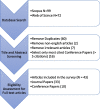Generative adversarial networks in EEG analysis: an overview
- PMID: 37038142
- PMCID: PMC10088201
- DOI: 10.1186/s12984-023-01169-w
Generative adversarial networks in EEG analysis: an overview
Abstract
Electroencephalogram (EEG) signals have been utilized in a variety of medical as well as engineering applications. However, one of the challenges associated with recording EEG data is the difficulty of recording large amounts of data. Consequently, data augmentation is a potential solution to overcome this challenge in which the objective is to increase the amount of data. Inspired by the success of Generative Adversarial Networks (GANs) in image processing applications, generating artificial EEG data from the limited recorded data using GANs has seen recent success. This article provides an overview of various techniques and approaches of GANs for augmenting EEG signals. We focus on the utility of GANs in different applications including Brain-Computer Interface (BCI) paradigms such as motor imagery and P300-based systems, in addition to emotion recognition, epileptic seizures detection and prediction, and various other applications. We address in this article how GANs have been used in each study, the impact of using GANs on the model performance, the limitations of each algorithm, and future possibilities for developing new algorithms. We emphasize the utility of GANs in augmenting the limited EEG data typically available in the studied applications.
Keywords: EEG; Emotion recognition; Epilepsy; GAN; Motor imagery; P300.
© 2023. The Author(s).
Conflict of interest statement
The authors declare that they have no competing interests.
Figures
Similar articles
-
EEG-Based Feature Classification Combining 3D-Convolutional Neural Networks with Generative Adversarial Networks for Motor Imagery.J Integr Neurosci. 2024 Aug 20;23(8):153. doi: 10.31083/j.jin2308153. J Integr Neurosci. 2024. PMID: 39207066
-
Generative Adversarial Networks-Based Data Augmentation for Brain-Computer Interface.IEEE Trans Neural Netw Learn Syst. 2021 Sep;32(9):4039-4051. doi: 10.1109/TNNLS.2020.3016666. Epub 2021 Aug 31. IEEE Trans Neural Netw Learn Syst. 2021. PMID: 32841127
-
Automatic Recognition of Multiple Emotional Classes from EEG Signals through the Use of Graph Theory and Convolutional Neural Networks.Sensors (Basel). 2024 Sep 10;24(18):5883. doi: 10.3390/s24185883. Sensors (Basel). 2024. PMID: 39338628 Free PMC article.
-
Virtual Electroencephalogram Acquisition: A Review on Electroencephalogram Generative Methods.Sensors (Basel). 2025 May 18;25(10):3178. doi: 10.3390/s25103178. Sensors (Basel). 2025. PMID: 40431969 Free PMC article. Review.
-
Generative adversarial networks for spine imaging: A critical review of current applications.Eur J Radiol. 2024 Feb;171:111313. doi: 10.1016/j.ejrad.2024.111313. Epub 2024 Jan 12. Eur J Radiol. 2024. PMID: 38237518 Review.
Cited by
-
Applications for Deep Learning in Epilepsy Genetic Research.Int J Mol Sci. 2023 Sep 27;24(19):14645. doi: 10.3390/ijms241914645. Int J Mol Sci. 2023. PMID: 37834093 Free PMC article. Review.
-
A magnetoencephalography dataset during three-dimensional reaching movements for brain-computer interfaces.Sci Data. 2023 Aug 22;10(1):552. doi: 10.1038/s41597-023-02454-y. Sci Data. 2023. PMID: 37607973 Free PMC article.
-
Paradigm shift required for translational research on the brain.Exp Mol Med. 2024 May;56(5):1043-1054. doi: 10.1038/s12276-024-01218-x. Epub 2024 May 1. Exp Mol Med. 2024. PMID: 38689090 Free PMC article. Review.
-
On the role of generative artificial intelligence in the development of brain-computer interfaces.BMC Biomed Eng. 2024 May 2;6(1):4. doi: 10.1186/s42490-024-00080-2. BMC Biomed Eng. 2024. PMID: 38698495 Free PMC article. Review.
-
A Data Augmentation Method for Motor Imagery EEG Signals Based on DCGAN-GP Network.Brain Sci. 2024 Apr 12;14(4):375. doi: 10.3390/brainsci14040375. Brain Sci. 2024. PMID: 38672024 Free PMC article.
References
-
- Shin Y, Lee S, Ahn M, Cho H, Jun SC, Lee HN. Noise robustness analysis of sparse representation-based classification method for non-stationary EEG signal classification. Biomed Signal Process Control. 2015;21:8–18. doi: 10.1016/j.bspc.2015.05.007. - DOI
Publication types
MeSH terms
LinkOut - more resources
Full Text Sources
Miscellaneous



